One of the most confusing specifications on electric, acoustic and bass guitars is the fret size. What does it actually mean? And why does it matter? In this article I’ll explain everything you need to know so you can choose the best fret size for you.
Fret Size Explained
First things first, we need to address what the term “fret size” actually refers to. It DOES NOT refer to the distance between the frets, which is a common misconception.
The size of a fret refers to the width and height of the fret wire, and more specifically, the crown (also known as the bead) of the fret wire.
To help you visualize this, check out this diagram showing the cross section of a guitar neck.

Why Does Fret Size Matter?
The width and height of the fret wire affects how a guitar feels to play. Let’s break this down into the two measurements and the effect they have on playability.
Fret Height
With taller frets, you will feel the fretboard wood less, since the strings are further away from the fretboard. Keep in mind though that this is not the same as the action which relates to the string height in relation to the fret height and not the fretboard itself.
Taller frets are often preferred for:
- Hammer ons/ pull offs (because less pressure needs to be applied)
- Bending (because there is less friction between the fretboard and fingers)
Shorter frets still have advantages though including:
- Making it less likely to push a note out of tune (because there is less distance to push the string between the fret and fretboard wood)
- They make it easier to slide up and down the fretboard (because the frets feel less like speed bumps
Fret Width
The width of the fret affects how smooth they feel. A wider fret makes the fretboard seem smoother, because the angle between the crown and the fretboard wood is not as steep. Hence, wide and short frets feel super smooth to slide over.
However, wider frets are more prone to causing intonation issues when the fret becomes worn. This is because the point of contact between the fret and the string is more likely to shift towards the tuners (away from the bridge) which pulls the note sharp.
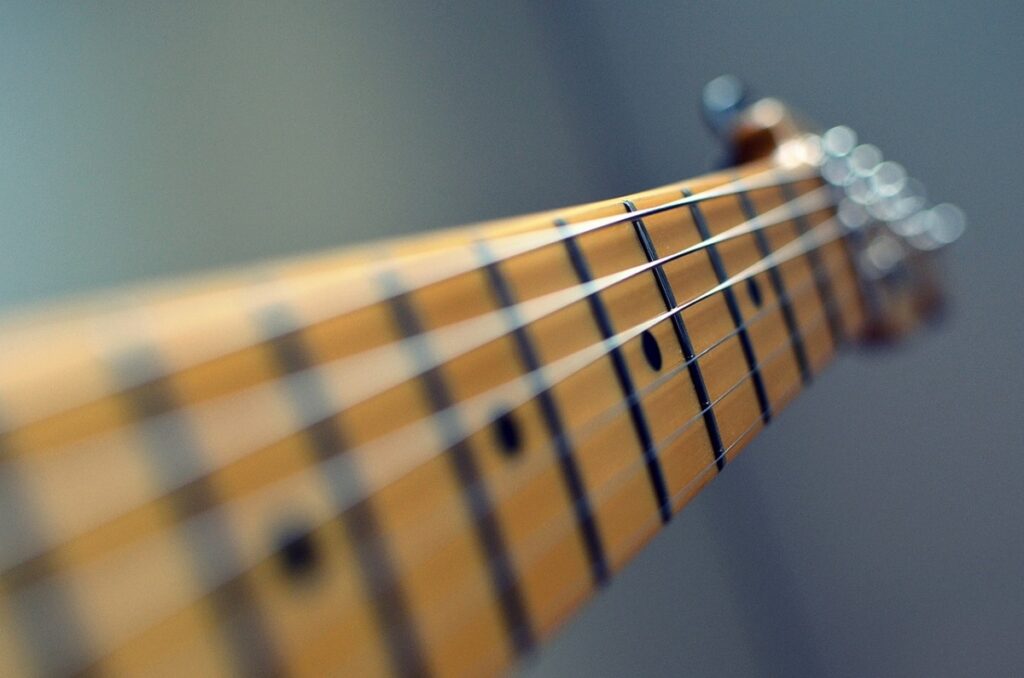
Different Fret Sizes
Rather than referring to the precise measurements of each different type of fret wire, they are all given names instead. For example: jumbo, medium jumbo, narrow tall, vintage tall, etc.
The most popular fret wire manufacturer is Dunlop, and they produce 5 popular fret sizes. In addition to their basic name, they also have a code:
- Vintage (6230)
- Narrow Tall (6105)
- Vintage Jumbo (6150)
- Medium Jumbo (6130)
- Jumbo (6100)
There are some other manufacturers who also make an additional larger size:
- Extra Jumbo
These fret sizes all vary in terms of the crown height and width. Here is a table showing all the measurements.
| Fret Size | Width | Height |
| Vintage | 0.078” | 0.043” |
| Narrow Tall | 0.090″ | 0.055″ |
| Vintage Jumbo | 0.102” | 0.042” |
| Medium Jumbo | 0.106” | 0.036” |
| Jumbo | 0.110” | 0.055” |
| Extra Jumbo | 0.118” | 0.059” |
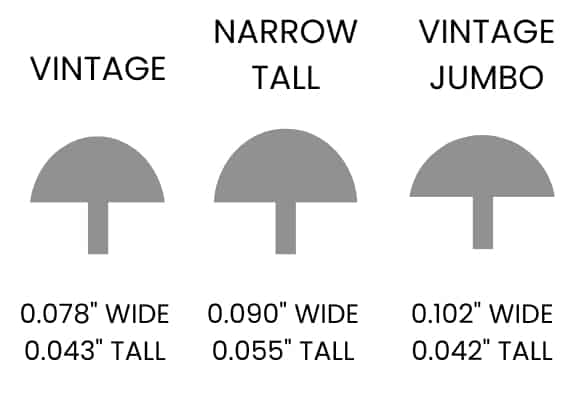
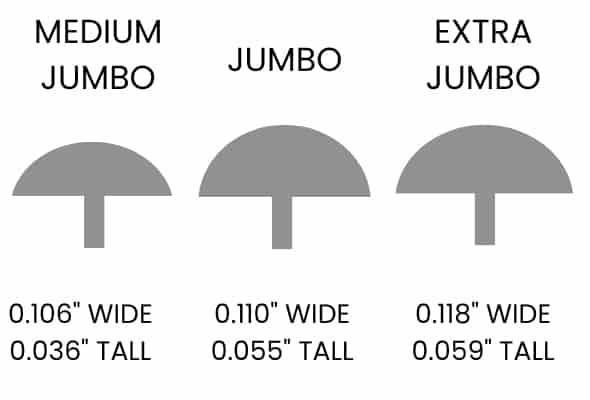
Now let’s take a look at each fret size individually and look and the pros and cons.
Vintage (6230) Frets
Vintage frets are small, both terms of the width and height and measure 0.078″ wide and 0.043″ tall.
Although they are slightly taller than both vintage jumbo and medium jumbo frets, they are still quite short. In terms of width, they are the narrowest fret type available.
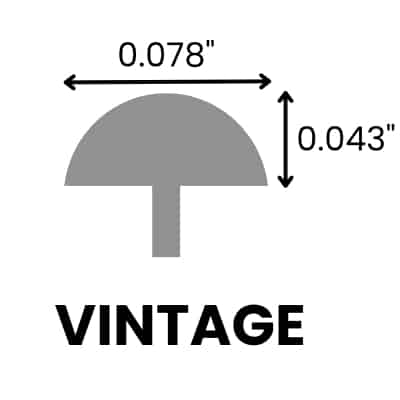
Which Guitars Have Vintage Frets?
- Fender Classic Series Telecasters and Stratocasters
- Fender Road Worn Telecasters and Stratocasters
- Fender Vintera ’50s Precision Bass
- Fender Vintera ’60s Jazz Bass
| Pros | Cons |
| Notes are unlikely to be pushed out of tune | Can feel more difficult to bend |
| Good for rhythm playing | Smaller frets can feel awkward to play |
Narrow Tall (6105) Frets
Narrow tall frets have a pretty descriptive name and measure 0.090″ tall and 0.055″ tall.
Although Jumbo frets are the same height (and Extra Jumbo frets slightly taller), they are still regarded as tall when you consider the height relative to the width as well.
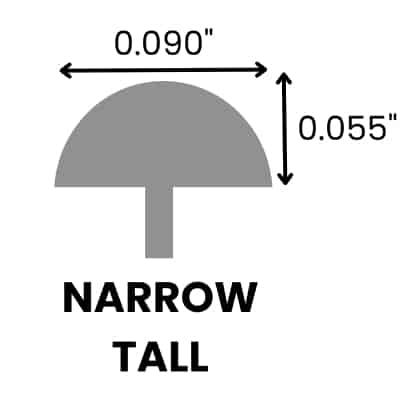
Which Guitars Have Narrow Tall Frets?
- Fender American Professional II Telecaster and Stratocaster
- Squier Classic Vibe Telecaster and Stratocaster
| Pros | Cons |
| Last longer than shorter frets | Easy to push a note out of tune |
| Make bending and quick playing feel easy | Can feel a bit like speed bumps |
Vintage Jumbo (6150) Frets)
Vintage Jumbo frets are quite rare nowadays, however they did use to be reasonably popular. Measuring 0.102″ wide and 0.042″ tall, they are considered middle-of-the-road in terms of both height and width.
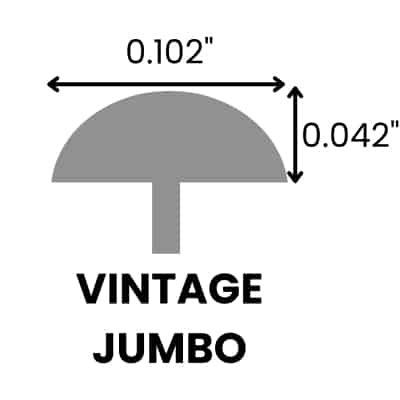
Which Guitars Have Vintage Jumbo Frets?
| Pros | Cons |
| Smooth feeling frets | Can feel harder to bend |
| Great for sliding up and down the fretboard | Not great for players with a light touch |
Medium Jumbo (6130) Frets
Medium jumbo frets are one of the most popular sizes available measuring 0.106″ wide and 0.036″ tall.
Although not quite as wide as the jumbo or extra jumbo sizes, they are still significantly wider than both vintage and narrow tall frets. They are also the shortest fret size available.
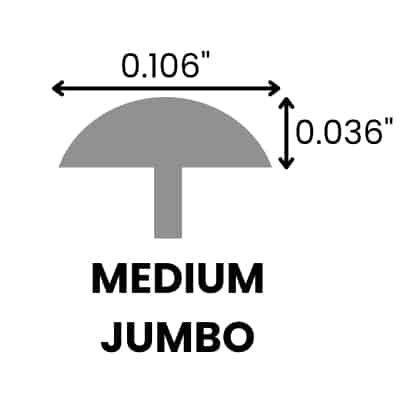
Which Guitars Have Medium Jumbo Frets?
- Fender American Ultra/ Ultra Luxe Telecaster and Stratocaster
- Fender Player Telecaster and Stratocaster
- Gibson Les Paul
- Gibson SG
| Pros | Cons |
| Smooth feeling | Not great for players with a light touch |
| Great for players with a heavier touch | Need replacing more often |
Jumbo (6100) Frets
Jumbo frets are very popular in the metal scene due to their smooth feel. They are slightly taller and wider than medium jumbo frets, measuring 0.110″ in width and 0.055″ in height.
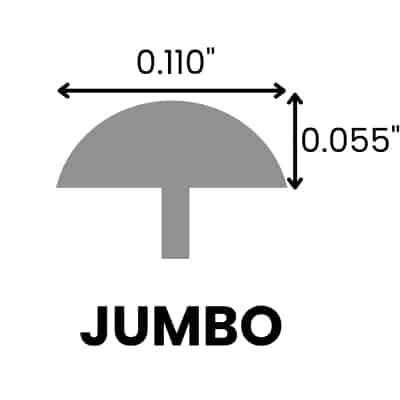
Which Guitars Have Jumbo Frets?
- Fender American Performer Stratocaster and Telecaster
- Jackson JS11 Dinky
- Schecter C-6
- Ibanez RG
| Pros | Cons |
| Great for metal and lead-playing | Chords can feel more tricky |
| Very smooth feeling | Can go sharp if you are heavy handed |
Extra Jumbo Frets
Extra Jumbo frets are the largest size available both in terms of width and height. They measure 0.118″ wide and 0.059″ tall and are typically reserved for metal and shred-style guitars. Sometimes you will also hear of “super jumbo” frets which have almost identical measurements.
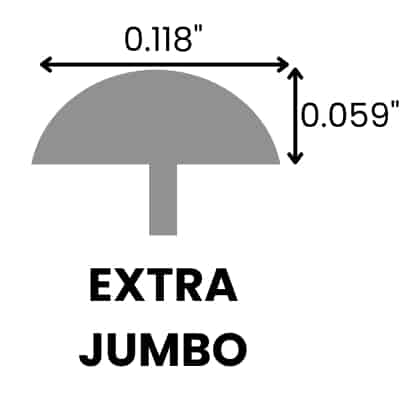
Which Guitars Have Extra Jumbo Frets?
- Schecter Reaper
- ESP Eclipse
| Pros | Cons |
| Great for metal and lead-playing | Chords can feel more tricky |
| Ultra-smooth feeling | Can go sharp if you are heavy handed |
Does Fret Size Affect Tone?
Okay I will start by saying that this is a very debated topic in the guitar community.
The argument that fret size affects the tone of guitar is that bigger frets have more mass, resulting in more vibration and consequently more sustain and resonance. This is one reason why larger frets (e.g. jumbo or extra jumbo) are popular.
How much difference does it make? In reality on an electric guitar, I personally don’t think it makes a huge difference, and certainly not enough for it to affect your decision.
In my opinion, fret size affects the feel of a guitar way more than the tone, so I think that should be the primary focus when deciding which size frets to go with.
Check out my complete guide to neck shapes, profiles and sizes.
